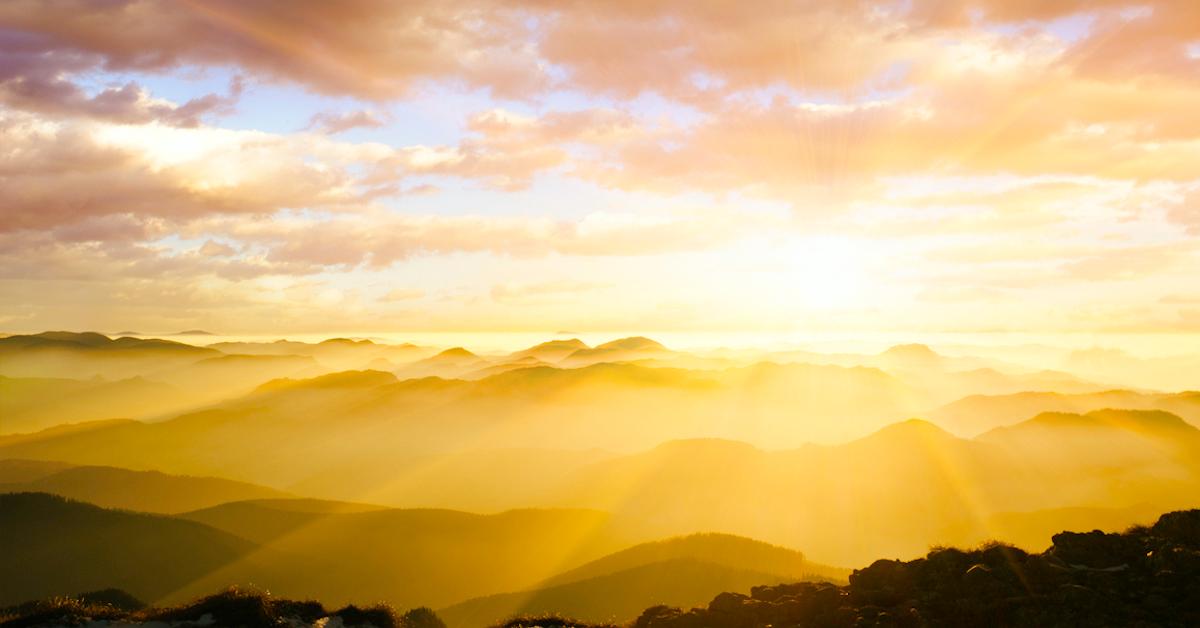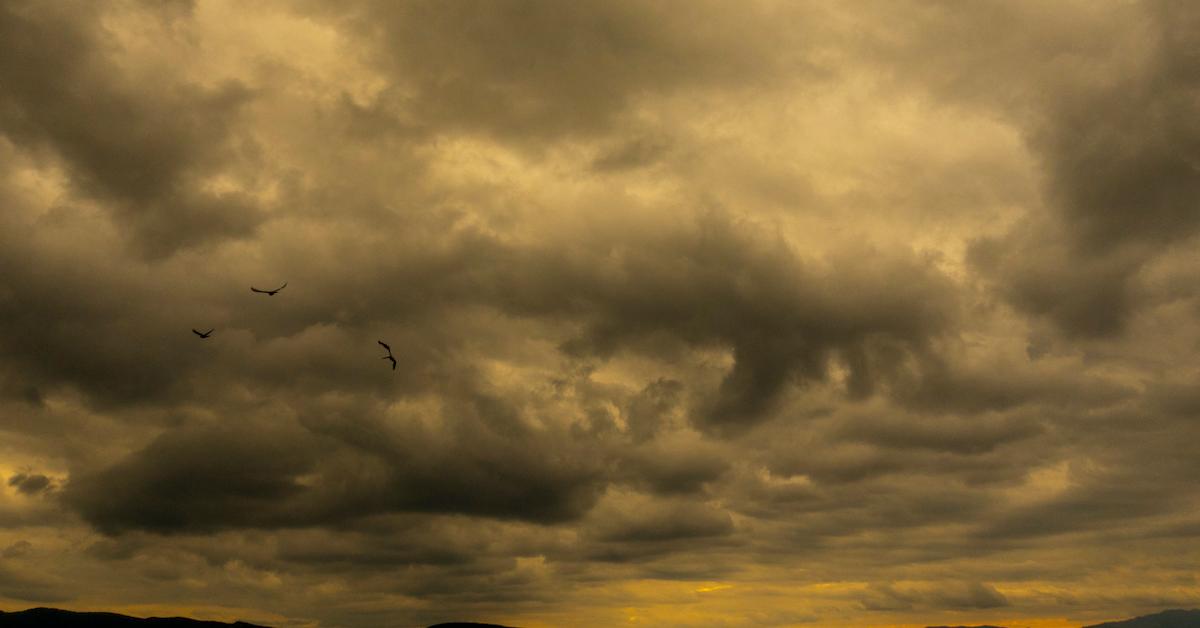A Yellow Sky May Feel Apocalyptic, but There's a Scientific Reason for It
Updated Sept. 7 2023, 1:07 p.m. ET

Between the world's general state of chaos and the climate crisis, the end of the world doesn't seem totally unimaginable. Therefore, many of us were worried when we noticed that the sky looked somewhat yellow, instead of emitting its regular blue hue, though it turns out our beloved planet may be just fine.
If you happened to be one of many wondering why the sky looks slightly yellow on certain evenings, you definitely aren't alone. Luckily, there's a scientific reason behind this unusual phenomena, and we're (relatively) positive the end of the world isn't here yet.

An evening thunderstorm may turn the sky slightly yellow or orange.
Oftentimes, the sky will appear yellow when a thunderstorm occurs. According to the National Severe Storms Laboratory, thunderstorms most often occur in the late afternoon or early evening, around the same time when the sun is beginning to set. Though the sun is blocked by clouds, the process of a sunset still happens, and it still emits colors. Therefore, a yellow, orange, and/or red hue may become visible through the clouds.
If you aren't familiar with what causes the color emissions from sunsets, short wavelengths of blue light are scattered rapidly, which leaves the yellow, orange, and red colors at the end of the spectrum. These colors are projected through the sky, despite the clouds, leaving a haunting yet gorgeous yellow hue.

The yellow-ish tint in the sky may also be due to an influx of dust in the atmosphere.
When strong, hurricane-force winds from Storm Ophelia blew through Ireland and the U.K. back in 2017, locals were shocked to see the sky turned dark and somewhat yellow afterwards. This was quite an unusual occurrence for the surrounding cities to see, but according to WalesOnline, it was most likely due to high amounts of dust in the atmosphere, due to the recent storm.
University of Reading's Rob Thompson said the yellow tint was most likely due to an influx of dust in the atmosphere that came from the Sahara, because the storm had passed through Africa before blowing through Europe.
"It's not that unusual, it happens quite regularly. Because of the way that Ophelia has tracked it's pulling a lot of dust up from the south. I think the absolute giveaway is that tomorrow we'll find our cars covered in orangey yellow dust," Thompson told WalesOnline.

A yellow sky could also mean there may be pollen in the air.
In April 2019, North Carolina famously experienced a "pollen-pocalypse." Aerial photos taken over Durham showed a thick haze of pollen which turned the sky a yellow-green color, and had resulted in an uptick of people in distress over allergies, according to the New York Post. At the time, pollen counts for pine, oak and birch had skyrocketed in the area, and meanwhile, other parts of the country were experiencing the same thing.
At the time, local photographer Jeremy Gilchrist tweeted: "No tricks here. Yes you are looking at a green haze made up of tree pollen from the pines of central NC!”
So overall, the sky emitting a yellow hue is most likely due to storms, dust, or pollen. The actual apocalypse is still likely far away.
This article, originally published on Aug. 20, 2020, has been updated.